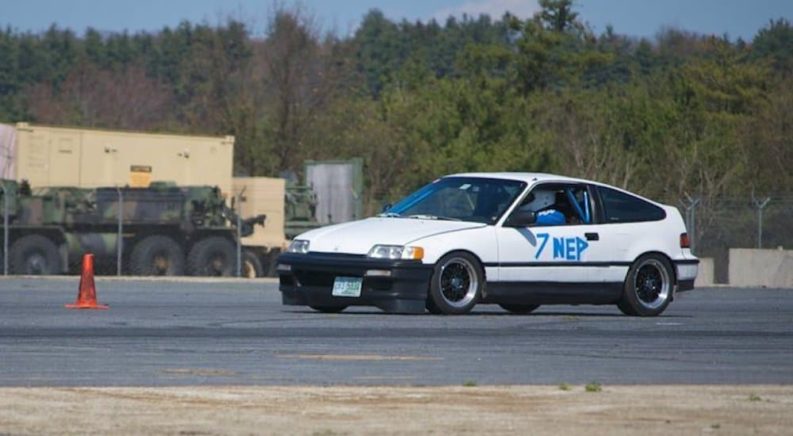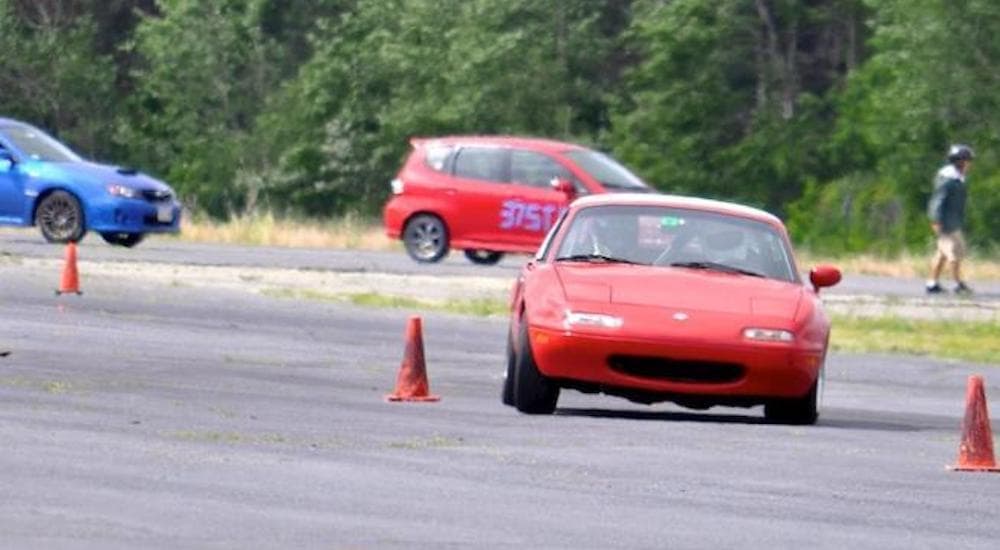If you have any interest in motor racing or precision driving, then you’ve probably heard of Autocross racing. It’s essentially a form of competitive driving that’s more about control of your vehicle rather than speed, which makes it a terrific option for a wide range of drivers. You don’t have to have a fancy sports car or powerful Italian supercar – just about anything in good condition can be used for Autocross. It’s all about having fun, pushing your abilities as a driver, and meeting other people who share your interests.
Recently, I was fortunate enough to get a chance to talk with an Autocross enthusiast and pick her brain about what it’s all about and why she keeps going back for more. Even though I had a pretty good sense of what Autocross racing was all about, her comments were incredibly enlightening and really gave me a new perspective on this hobby.
Whether you’ve never heard of Autocross before, or it’s something you’ve been interested in, but you’re not sure where to start, her insights will point you in the right direction for a fantastic way to spend a weekend.
Autocross Basics
Although people will refer to it as “Autocross racing,” it’s not racing in the sense of two people pitted against each other on a straightaway or drivers on an oval course for several hours. Autocross is all about skill – there’s still a racing element since you’re timed on a run through the course, but you don’t go incredibly fast. The race is about precision driving, having control over your vehicle so you can navigate the course.
Organizers set up a course using cones, and then drivers take turns, one at a time, going through the course as efficiently as possible. In the end, drivers’ times are compared, and winners are announced for different vehicle classes.
I had a chance to talk to Sam, a serious Autocross enthusiast who is affiliated with Wicked Performance Group in New Hampshire and involved with the Sports Car Club of New Hampshire (SCCNH), to ask her about her own experiences in Autocross. I asked her to tell me about her first time on the course, driving at an event, and this is how she described it:
“I was nervous about driving the car I had at the time at Autocross.” Although she was quick to explain that you really can drive just about anything at these events. “My buddy, Michael, let me drive his e30: a fully-caged race car; he had done intense races with it.” But, even though it was more car than she was used to, she didn’t let that stop her.
“I learned to do heel-toe, rev-matching at Autocross in a beast of a BMW. Not an Autocross car, way too much power. It was exhilarating; at first you have butterflies and want to make sure you do the track properly.” After this experience, she kept going back for more racing, eventually deciding to become an instructor. She now works with new drivers who come to Autocross for their first time by showing them the ropes and helping them get a feel for the event. When I asked her to summarize the experience, she put it succinctly: “It was amazing.”
How to Get Started with Autocross
If that sounds as fun to you as it did to me, then I have good news: getting started with Autocross is incredibly easy and, perhaps best of all, inexpensive. Sam suggested that you start local, look for auto clubs in your area, like the SCCNH that she’s a part of in New Hampshire. While there is a national organization, the Sports Car Club of America (SCCA), it’s not necessary that you join them to participate at a local or state level. She strongly recommended looking for a group in your city or state so you can get to know the people you drive with.
In terms of what you need to get started, Sam said it’s pretty simple: your car, a helmet, and the desire to have fun. Of course, you want to make sure your vehicle is in good shape, so Sam said, “Make sure your oil is changed if it’s coming up––or topped off. Do a brake check and definitely check your tires––make sure they’re not bald.” She suggested that you have a mechanic take care of such standard maintenance, “the week before or do it yourself, make a small checklist. Check ball joints, make sure nothing is loose.”
At the Autocross event, the people that organize these races will inspect your vehicle as well to ensure it’s in good shape for a race. Sam says they’ll “lift your car, one side at a time, shake the wheels, check to see your tires are all good, that your rugs are removed, nothing is in the trunk, and nothing is in the back seat.” They’ll also check your helmet to make sure it’s up to date – shoot for Snell 2015 or later – and then they’ll put a dot on your window when you pass.
She was quick to add, “Before you head to AC, take everything out of your car, rather than when you’re there. If it rains, your carpets and stuff will get wet.” Sam also said you’ll need to wear a long-sleeve shirt and make sure you bring plenty of water. “You’ll get dehydrated – the adrenaline and thrill will dry you out.”
What’s a Day at Autocross Like?
When I asked her about a typical Autocross day, Sam said she gets there early in the morning when the gate opens (for her, that’s 8 am). She parks her car, goes to the check-in booth, and takes a look at the cones, which are already set up. Then she’ll walk the track; this is one of the most important things she recommends for any driver at Autocross. “Walk the track however many laps you need to get a feel,” she says. At around 9 am, the technicians will start checking vehicles to make sure you meet all the tech requirements.
Then you find out what group you’re in; at her events, there are usually three groups. They’ll rotate the groups throughout the day: one running, one working, and one on break. Most drivers will go through a couple of times; Sam told me she can get 10-12 laps in on a good day. The day ends around 4 pm, at which point there’s a time-check to see who won their class. Sometimes there are even trophies.
No kids are allowed in cars, but kids can watch with a parent. The people on break will typically hang out and watch, maybe get something to eat. Some people just volunteer to work and support the drivers, even if they don’t plan on driving. Spouses and families will come to support each other, hang out, and watch.
It’s worth noting there are numerous classes for Autocross, so you’re competing against people in vehicles similar to yours. Sam said, “I first started with a BMW e30, which was a ‘prepared’ car – or full-on race car. Then a Honda Prelude, which was ‘street modified.’ Now a Honda Civic Hatchback: it’s little and purple, so it’s called ‘Lil Purp,’ which is also ‘street modified.’ It’s ‘modified’ because it’s not stock: the engine was taken out and replaced with the engine from the Honda Prelude. Also, all-new suspension, brake, wheels, exhaust, etc. It’s still street legal, but very little in it is still stock.”
There are additional classes for stock vehicles, models with only altered suspensions, classic American muscle cars, and even carts.
What Keeps Someone Coming Back for More?
When I asked Sam why she keeps going back for more, I expected her to tell me it was for the thrill of the race, for the excitement of being behind the wheel. But that’s not what she said. What she told me was:
“What I find most appealing, especially with people I participate with, is the people. There’s a healthy amount of competition; we test each other and push each other to the limits. If something happens, there’s always someone there to help you get back on track. [though she pointed out that other than someone occasionally losing control for a moment, maybe even spinning out, there aren’t any big accidents, and all that happens is someone hits some cones] They’re all happy to see you succeed and see your times. If you have a great run, people will stay and cheer you on. Doesn’t matter if you’re a boy or a girl; everyone’s happy to see you succeed and do better. If you’re having a bad day, there’s always someone there to help you out.”
This is what really struck me about my conversation with Sam. Looking at Autocross racing from the outside, it seems like it’s all about driving and skill, which on one level it is. But it became clear that there’s something more to it: the hobby experience that keeps you thinking about it all week, chomping at the bit, and impatiently waiting for weekend mornings.
“Those people become family,” Sam told me. “You look forward not just to race, but to see those people again. Literally, it’s a family; only way I can describe it.”
To find an Autocross group, search for an auto club near you, or check out https://www.motorsportreg.com/ to see what’s scheduled in your area.






